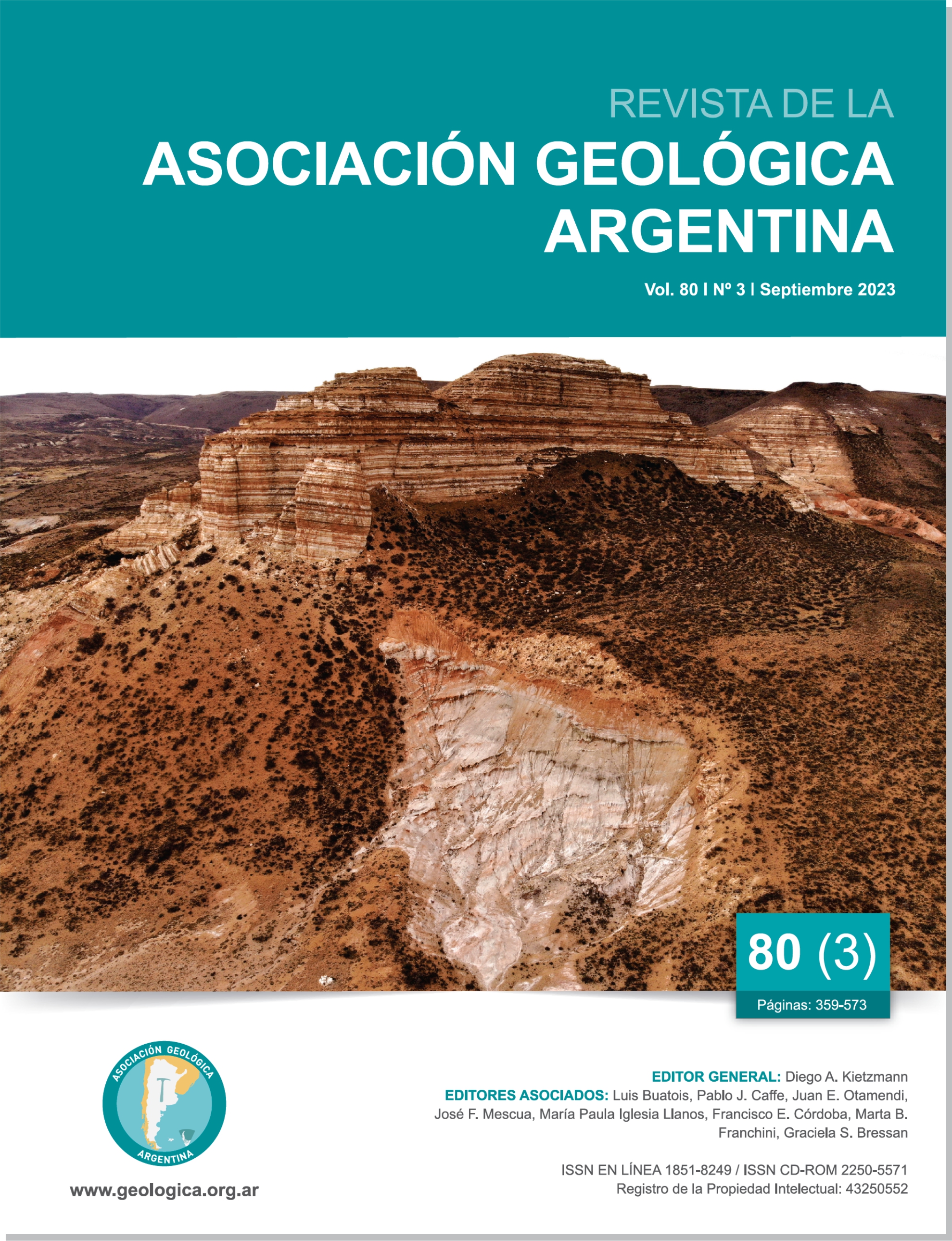Geology of the bottom and sub-bottom of the inlet sector of the Bahía Blanca estuary, Argentina
Main Article Content
Abstract
The Bahía Blanca estuary located in the south of Buenos Aires province is the result of hydrologic and sedimentary events linked to Quaternary variations of the sea level. Bathymetric surveys with multibeam echosounder and high-resolution seismic profile (3.5 kHz), the geomorphological and seismostratigraphic characteristics of the entrance sector to the mentioned estuary are analyzed. Four bottom types are determined bedrock with scarps, dunes, hard bottom with little/no sedimentary cover and sandy bottom. Thus, the seismic-stratigraphy of the area of interest was defined four seismic sequences were recognized. Sequences S1 and S2 form the acoustic basements composed of clayey silt and cemented silty clay sediments and were correlated with the Formación Arroyo Chasicó-Formación Pampiano (late Miocene-Pleistocene). Sequence S3 formed above S2 and showed lithology and seismic configuration are indicative of an ancient deposit of fluvial origin. The stratigraphic column was completed with sequence S4 corresponding to the mid-recent Holocene, whose most superficial sediments are in equilibrium with the current hydrodynamic conditions.
Article Details

This work is licensed under a Creative Commons Attribution-NonCommercial 4.0 International License.
Nota de copyright
Los autores conservan los derechos de autor y garantizan a la revista el derecho de ser la primera publicación del trabajo licenciado según una licencia de atribución Creative Commons que permite a otros compartir el trabajo con el reconocimiento de la autoría y de la publicación en la que se publicó por primera vez.
Declaración de privacidad
Los nombres y direcciones de correo electrónico introducidos en esta revista se usarán exclusivamente para los fines declarados por esta revista y no estarán disponibles para ningún otro propósito u otra persona.

